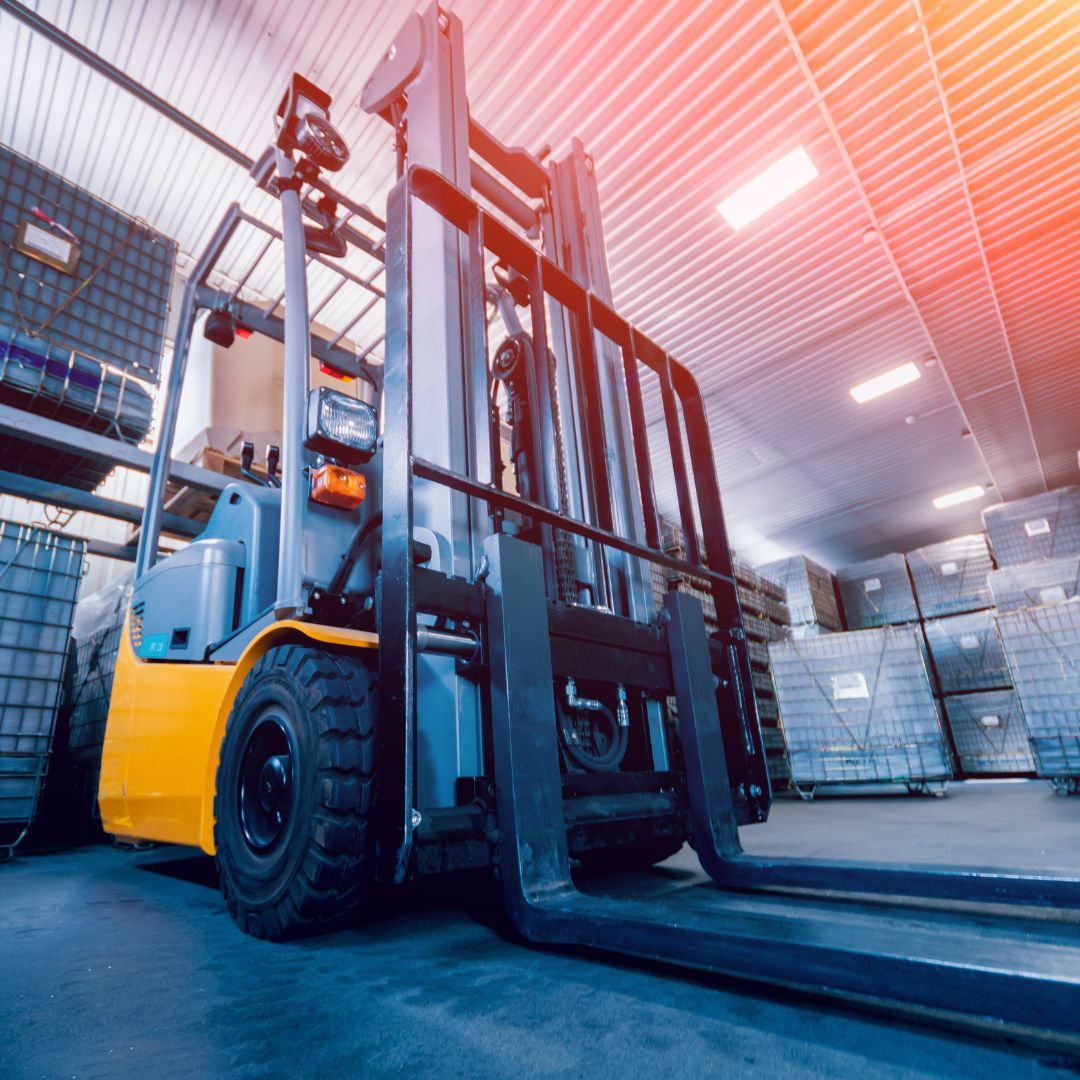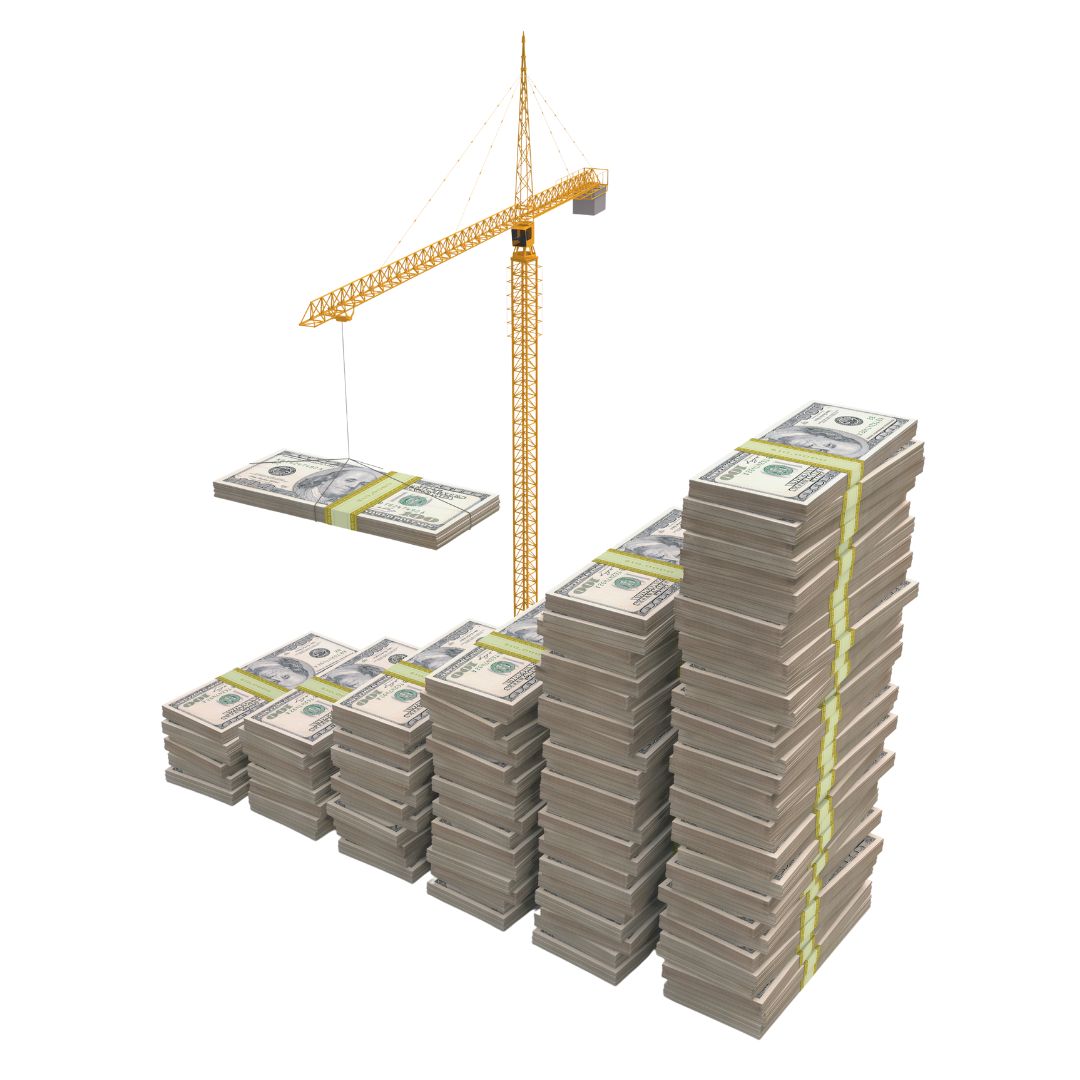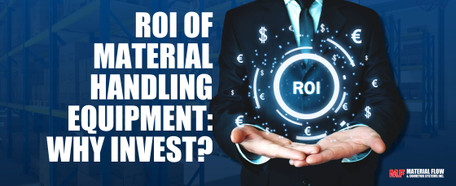ROI of Material Handling Equipment: Why Invest?
13th Nov 2023
Material handling systems serve as a versatile set of solutions employed in various industries to enhance the efficient transportation and storage of materials and products. Material equipment includes conveyor systems, forklifts, pallet jacks, cranes, and automated guided vehicles (AGVs). These tools are instrumental in streamlining logistics, improving operational efficiency, and enhancing workplace safety by reducing the need for manual labor. Additionally, the utilization of racks and shelving systems contributes to well-organized storage. In various industrial settings, this equipment is considered essential, as it significantly contributes to smoother workflows while also minimizing labor costs.
From optimizing material flow systems to improving safety, the right handling equipment can significantly impact a company's bottom line. While the initial investment in material handling equipment can be somewhat significant, the long-term benefits of having the right equipment in place can far outweigh the costs. In this blog, we'll discuss how to improve your material handling ROI and how investing in the right material handling equipment from a reputable supplier can lead to substantial returns on investment (ROI).
Functionality of Handling Equipment

Material handling equipment plays a crucial role in streamlining operations and logistics in various industries. It enhances efficiency by automating material transport and reducing the reliance on manual labor, which leads to quicker and more consistent processes. It contributes to safety by minimizing the need for manual handling of heavy or hazardous materials, reducing the risk of workplace injuries and promoting employee well-being. Specialized storage equipment, such as racks and shelving systems, optimizes space utilization, enabling more efficient use of available areas and decreasing the requirement for larger facilities, thus lowering operational costs.
Improved Productivity
Moreover, these investments also lead to cost savings, including lower labor expenses, reduced workplace injuries, and minimized product damage. Materials handling equipment not only boosts productivity but also offers a compelling return on investment, making it a crucial asset for businesses seeking operational efficiency and cost-effectiveness.
Improved Safety
Investing in precision material handling equipment and industrial handling systems can greatly improve workplace safety through several key mechanisms. Firstly, it reduces workplace injuries by minimizing manual lifting and carrying of heavy loads, a leading cause of injuries according to the U.S. Bureau of Labor Statistics. Ergonomically designed equipment in a warehouse also helps prevent musculoskeletal disorders, which cost employers billions in direct expenses, as reported by OSHA.
Automated equipment like AGVs and conveyor systems mitigate the risk of accidents due to human error, responsible for over 90% of workplace accidents according to the National Institute for Occupational Safety and Health (NIOSH). Additional features like backup cameras and sensors enhance operator visibility, reducing the chances of collisions and accidents. In sum, investing in material handling equipment not only promotes employee well-being but also leads to significant cost savings, including reduced workers' compensation claims and medical expenses, ultimately creating a safer and more productive work environment.
The Cost of Not Investing
Material handling equipment offers remarkable benefits, with statistics supporting its value. It optimizes material flow, thus improving productivity. Efficient racking systems can increase storage capacity by up to 40%, as noted by the Warehousing Education and Research Council. Additionally, it significantly reduces labor costs, with the Material Handling Institute indicating potential savings of up to 50%.

In the absence of proper material handling equipment, businesses are susceptible to significant downtime and productivity losses. Manual handling and inefficient processes often lead to extended lead times, causing delays in production and order fulfillment. Without equipment like forklifts and conveyors, material transport becomes labor-intensive and slow, resulting in reduced throughput and productivity. Moreover, the increased risk of errors and material damage due to inconsistent manual handling further hampers productivity and increases the need for rework or replacements, incurring additional costs. Workers might also experience fatigue and decreased morale, impacting overall efficiency. Additionally, without appropriate storage solutions, locating and retrieving materials can be time-consuming, leading to further delays. In essence, the lack of proper material handling equipment not only increases downtime but also significantly hinders productivity, ultimately affecting a business's bottom line and its ability to meet customer demands efficiently.
Quantifying the Return on Investment (ROI)
The initial investment in material handling equipment is a prudent step that fosters a more efficient, safer, and cost-effective business operation, making it an essential part of a successful long-term strategy. Handling equipment not only enhances operational efficiency but also brings substantial cost savings, specifically in labor and accident-related expenses. These tools automate and streamline material transport and storage processes, reducing the need for manual labor. This leads to increased productivity, reduced labor costs, and faster operational turnaround.
Additionally, the use of such equipment enhances workplace safety by minimizing the risks associated with manual handling, significantly decreasing accident-related costs like medical bills, workers' compensation, and potential legal liabilities. Injuries and accidents can disrupt operations, resulting in downtime and reduced productivity, which can be avoided with proper material handling equipment. Overall, these investments offer a twofold advantage: improved operational efficiency with reduced labor expenses and heightened safety, leading to fewer accident-related costs and disruptions. Businesses that prioritize material handling equipment enjoy not only streamlined operations but also a more cost-effective and secure workplace.
Long-Term Benefits
Reducing wear and tear on goods and equipment offers a multitude of long-term benefits for businesses. By minimizing the physical stress and damage on products during handling, businesses can maintain the quality and integrity of their goods. This translates into improved customer satisfaction, as customers receive products in pristine condition, reducing the likelihood of returns or customer complaints. Additionally, equipment in warehouse environments that experience less wear and tear have a longer lifespan, reducing maintenance and potential replacement costs. It also leads to improved operational efficiency, as well-maintained equipment is less likely to break down, resulting in less downtime and higher productivity. Moreover, this proactive approach to reducing wear and tear fosters a safer work environment by decreasing the potential for equipment failures and accidents. Mitigating wear and tear on both goods and equipment yields long-term benefits, including enhanced product quality, reduced costs, increased productivity, and a safer workplace, all contributing to a more competitive and sustainable business operation.
Conclusion

Investing in material handling equipment is more than just a cost; it's an investment in material handling safety, efficiency, and profitability of your handling warehouse or material handling company. From improving material flow systems to reducing labor costs and enhancing safety, the ROI of high-quality material handling equipment and supplies is clear.
By partnering with a reputable material handling equipment supplier, you can access the tools and expertise needed to make the most of your investment. Ultimately, material handling equipment is a strategic investment that empowers businesses to thrive in the competitive market landscape, fostering both short-term efficiency and long-term growth.


